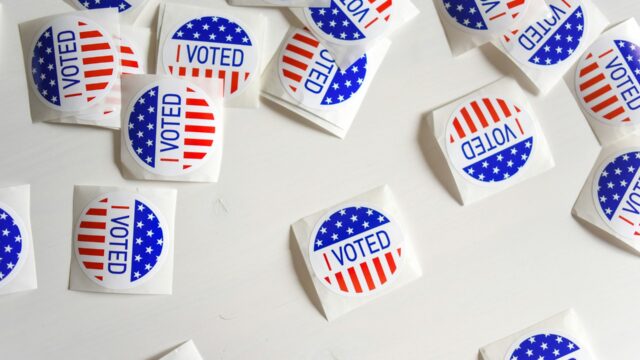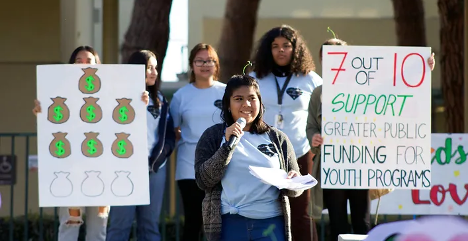CMS should encourage voter participation through HealthCare.gov
May 2024

BCHC signed onto a letter supporting a Centers for Medicare and Medicaid Services (CMS) proposal to offer voter registration for individuals when they enroll in federal health care coverage through the Affordable Care Act Marketplace, HealthCare.gov.
The letter responds to the Data Collection to Support Eligibility Determinations for Insurance Affordability Programs and Enrollment through Health Benefits Exchanges, Medicaid and CHIP Agencies (CMS-10440) published in the Federal Register at 89 FR 16580. The action follows President Biden’s Executive Order 141019 on “Promoting Access to Voting,” which acknowledged the responsibility of the federal government to expand access to and education about voter registration to help ensure all Americans can participate in our democracy.
HealthCare.gov ensures that a critical population has the opportunity to enroll in affordable health care coverage.
Access to affordable and high-quality health care varies widely in the United States. Due to the implementation of the Affordable Care Act (ACA) and the federal marketplace HealthCare.gov, health care coverage is within reach for millions of Americans, especially those who are historically uninsured, including individuals and families with low incomes, many of whom – due to a history of systemic racism and oppression – are from Black, Indigenous and other communities of color.
Although a majority of states have created state-based marketplace under the ACA, a significant portion of states – Alabama, Alaska, Arizona, Florida, Hawaii, Indiana, Kansas, Louisiana, Mississippi, Missouri, Montana, Nebraska, North Carolina, North Dakota, Ohio, Oklahoma, South Carolina, South Dakota, Tennessee, Texas, Utah, Wisconsin, and Wyoming – solely rely on the federal marketplace. Several of these states have populations who have low incomes (<200% FPL) above 25% of the state’s population and uninsured rates higher than the U.S. average. For example, 40% of Mississippi’s population has low incomes, and the state’s uninsured rate in 2021 was 14%, slightly higher than the U.S. rate of 10%. In Texas, 32% of the population has low incomes, with an uninsured rate of 21%; in Alabama, 35% of the population has low incomes, with an uninsured rate of 12%; and in Florida, 31% of the population has low incomes, with a state uninsured rate of 15%. In the states mentioned above, over half of the non-elderly Medicaid enrollees are people of color, with Texas having the highest rate at 80%.
The ability to register to vote and engage in civic engagement is critical to people’s health and well being, including their sexual and reproductive health.
There is ample research showing that civic and voter participation is strongly associated with health outcomes. A 2019 study found that states and countries that have more accessible voting policies and higher levels of civic participation are healthier across multiple public health measures. A Healthy Democracy Healthy People analysis from 2021 shows that states with more inclusive voting policies and greater levels of civic participation are healthier across 12 public health indicators including self-rated mental and physical health, percent of adults receiving disability benefits, and infant mortality.
People vote on ballot initiatives and candidates that directly affect their health, such as Medicaid expansion, clean air laws, and of course reproductive health care and abortion access. And research has shown that high levels of civic participation encourage a sense of social cohesion and help people in communities feel connected to each other and recognize their own agency, which also improves health outcomes. Improving health disparities can only be achieved by fully addressing the social and political determinants of health, including and especially civic and voter participation. We have seen vivid examples of what can happen when voters are mobilized to vote to protect their health in the elections since Dobbs v. Jackson Women’s Health Organization when people’s reproductive health care has been on the ballot and how much that impacted people’s incentive to vote.
The most common reasons people do not vote are because they are not registered to vote and do not understand how to navigate the voting process. Eligible people successfully register to vote when they are offered active voter registration services. This includes being asked if they want to vote or to update their registration, receiving assistance as they complete the voter registration process.
People in the states that use HealthCare.gov experience disproportionate barriers to both health care coverage and access to the voting booth.
It’s also important to note that many of the states that rely solely on the federal marketplace, HealthCare.gov are states where local politicians tend to be the most hostile to access to health care, from refusing to expand Medicaid to restricting access to birth control and abortion. Integrating an optional voter registration question into HealthCare.gov is a critical way to reach people in those communities and to engage them in the civic process and voting for representatives who have their best interests and health outcomes in mind. Almost every state that ranks low in voter registration and access – with the exception of New Hampshire and Arkansas – uses the federal marketplace, making particularly stark the need to provide additional voter registration opportunities, to both increase voter participation and improve health outcomes.
Many states, disproportionately in the South, have long passed anti-voter laws that suppress the political will of communities of color, young people, LGBTQ+ people, and other historically disenfranchised communities. Widespread disenfranchisement and low civic participation diminish the viability of critical protective legislative efforts that are widely popular and would meaningfully support communities that are most in need. Low civic participation engineered by anti-democracy lawmakers or the result of voluntary disengagement has the same impact of blocking popular and meaningful laws and government actions to expand access to health care, quality education and employment, housing and other vital resources and programs too numerous to name that contribute to positive health outcomes for individuals and their families.
Alarmingly, and for various reasons that are also directly tied to these anti-democratic practices, approximately one-third of eligible Americans did not (or could not) cast a ballot in the 2020 election, and disparities in voter turnout persist despite overall increases in voter participation. Numerous laws and policies have made it more difficult for various communities to vote, driving down voter turnout for many who have the most to lose in policies that restrict access to health care, including reproductive health care. As a result, Black, Latinx, Asian American and Pacific Islander (AAPI), Indigenous people, younger voters, and voters with lower education levels are often disenfranchised.
Additionally, voters with disabilities face numerous challenges to voting. Americans with disabilities were seven percentage points less likely to vote than people without disabilities in the 2020 election even after adjusting for age. In 2020 voters with disabilities were also nearly twice as likely as nondisabled voters to experience problems when voting, and 1 in 9 voters with disabilities faced barriers accessing the ballot box. People with vision and cognitive impairments were especially likely to face obstacles during the 2020 election, which accounts for roughly 7 million eligible voters and 13.1 million eligible voters, respectively. These structural barriers to political participation and power keep communities most impacted by inequities out of effectively influencing critical decision making processes.
Expanding access to voter registration through as many opportunities as possible, and particularly for people enrolling in health coverage, given the direct connection between health and civic engagement, will be incredibly meaningful in addressing these issues and providing people who have the most barriers to the voting box additional opportunities to register to vote.
We very much support the inclusion of an optional question asking people about their interest in registering to vote with minor changes.
We recommend that the question “Would you like information on registering to vote?” (Attachments A through D) be changed to “If you are not registered to vote where you currently live, would you like to apply to register to vote?” The new question emphasizes the ability to take action and not just receive a deluge of information.
To make sure the applicant sees the question, we recommend that the voter registration question in Attachment A be programmed as a hard stop so that the applicant has to choose an answer from yes, no, and prefer not to answer. It is important that a hard stop requiring the applicant to answer the question about whether they want information on registering to vote – even if they choose not to answer – enables people to consider the question without skipping over it.
We recommend that the text following the voter registration question (Attachments A through D) be changed to “You clicked that you would like to register to vote. You can access a voter registration application, voter registration information including deadlines, and other voting resources at vote.gov.” This modified language emphasizes the ability to take action and similarly not just receive a deluge of information.
We recommend that the text following the voter registration question in Attachment A be presented differently, choosing from one of 2 options.
Finally, we recommend that in the Application for Health Coverage, the Step 3 language “NO. If no, skip to Step 4.” should be modified to read, “NO. If no, review voter registration question below and then proceed to Step 4.”
Read the letter
Download now Read the letter

